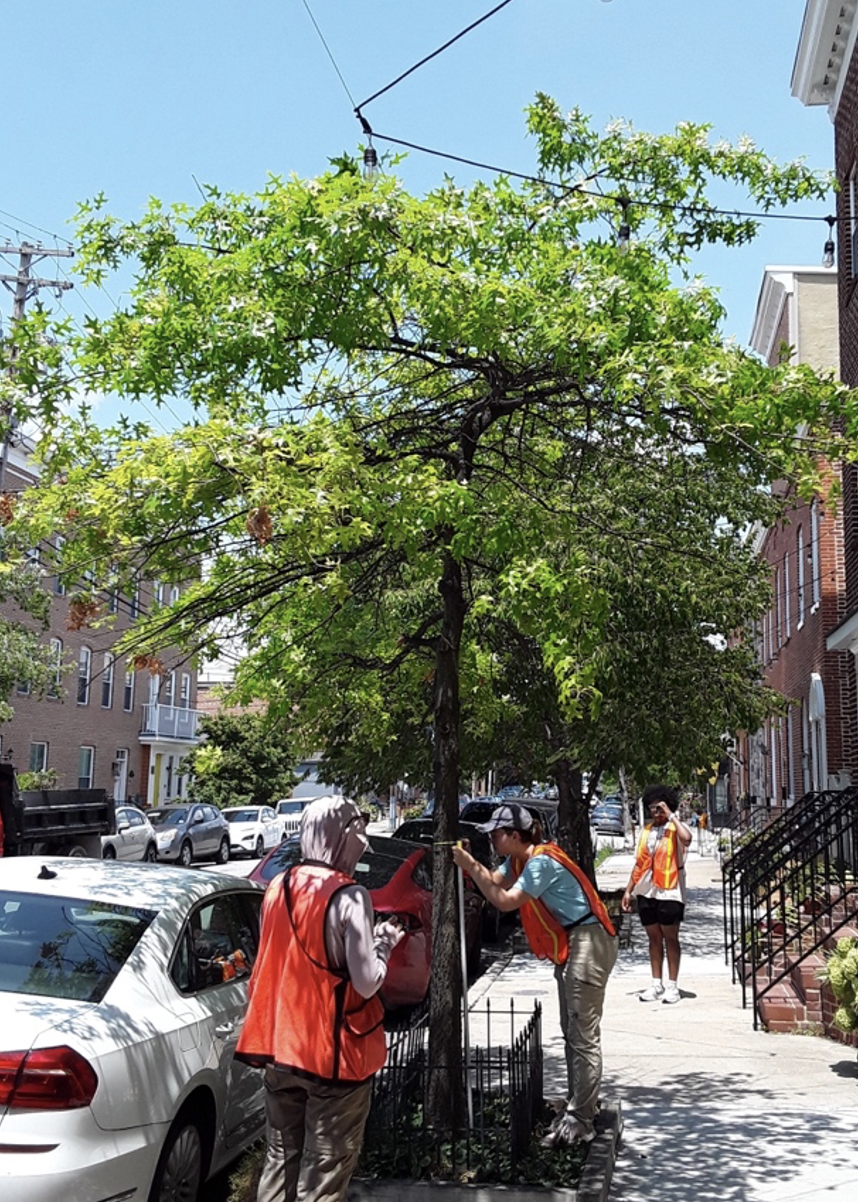A University of Maryland research initiative supported by a Grand Challenges Grant and led by Assistant Professor of Entomology Karin Burghardt is advancing environmental justice and helping cities to become more climate change-resilient through urban tree growth and development.
Urban canopy trees provide coolness from summer heat, control stormwater, and promote the health and well-being of city residents, all while supporting biodiversity. As a result, many cities, including Baltimore, Md., are increasing urban tree planting campaigns to reach the 30-40% canopy cover needed for residents to feel full benefits. However, planners often do not know which species of trees will survive to provide benefits as large trees, especially with projections of even higher temperatures to come due to climate change. Further, current tree cover in cities is not equitably distributed, leaving some neighborhoods—often those previously redlined—with smaller and less diverse trees and thus hotter and more challenging growing conditions for newly planted trees to grow.

(Image credit: Sophie McClusky)
Dr. Burghardt’s Tree Health Equity project team spent the past summer studying 315 young trees, which had been last inventoried in 2018 and are currently growing across 14 Baltimore neighborhoods. For each tree, the team assessed 35+ metrics of tree growth, performance, and health, including physiology through photosynthetic rates and insect populations, such as colonization by the invasive spotted lanternfly, which recently appeared in Baltimore for the first time.
The project aims to identify tree species performing well in city neighborhoods with low current tree canopy cover, such as those that were historically redlined through a discriminatory federal housing policy in the 1930s and 40s. This is important because limited planting palettes potentially contribute to a documented pattern of low-diversity plantings in these neighborhoods, leaving plantings more vulnerable to pests and disease. Identifying heat and urban stress-tolerant species diversifies the new trees planted in these neighborhoods with the goal of more resilient tree canopies providing services to all Baltimore residents.
The project team works iteratively with city foresters, community groups, and residents on project activities and developing extension programs. In the past year, the team delivered workshops for community groups on urban tree planting species selection for recipients of the Urban Tree Community Grant program administered by the Chesapeake Bay Trust as part of Maryland’s 5 million trees project, co-organized a meeting on Urban Heat, and led an Integrated Pest Management Tree CSI Walk for Baltimore Forestry Employees. Results from the summer will be presented to scientists, Baltimore agency professionals, and community members by Entomology Graduate student Maggie Schaefer at the Baltimore Ecosystem Study Annual Meeting in October.
For more information about this Grand Challenges project, visit: https://research.umd.edu/urban-trees
